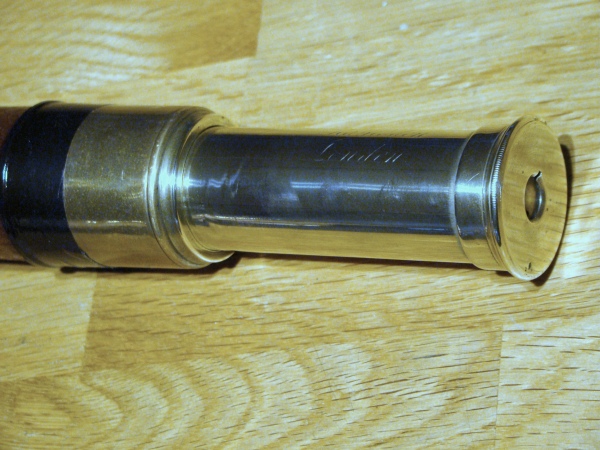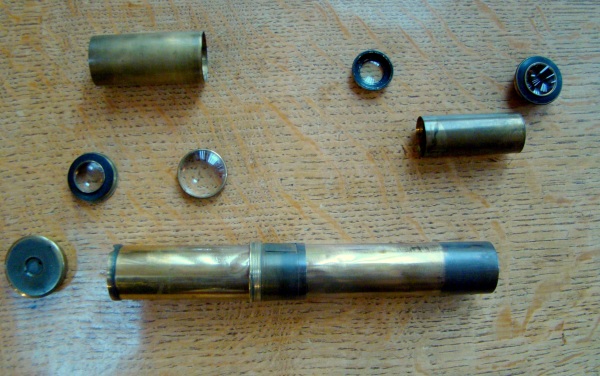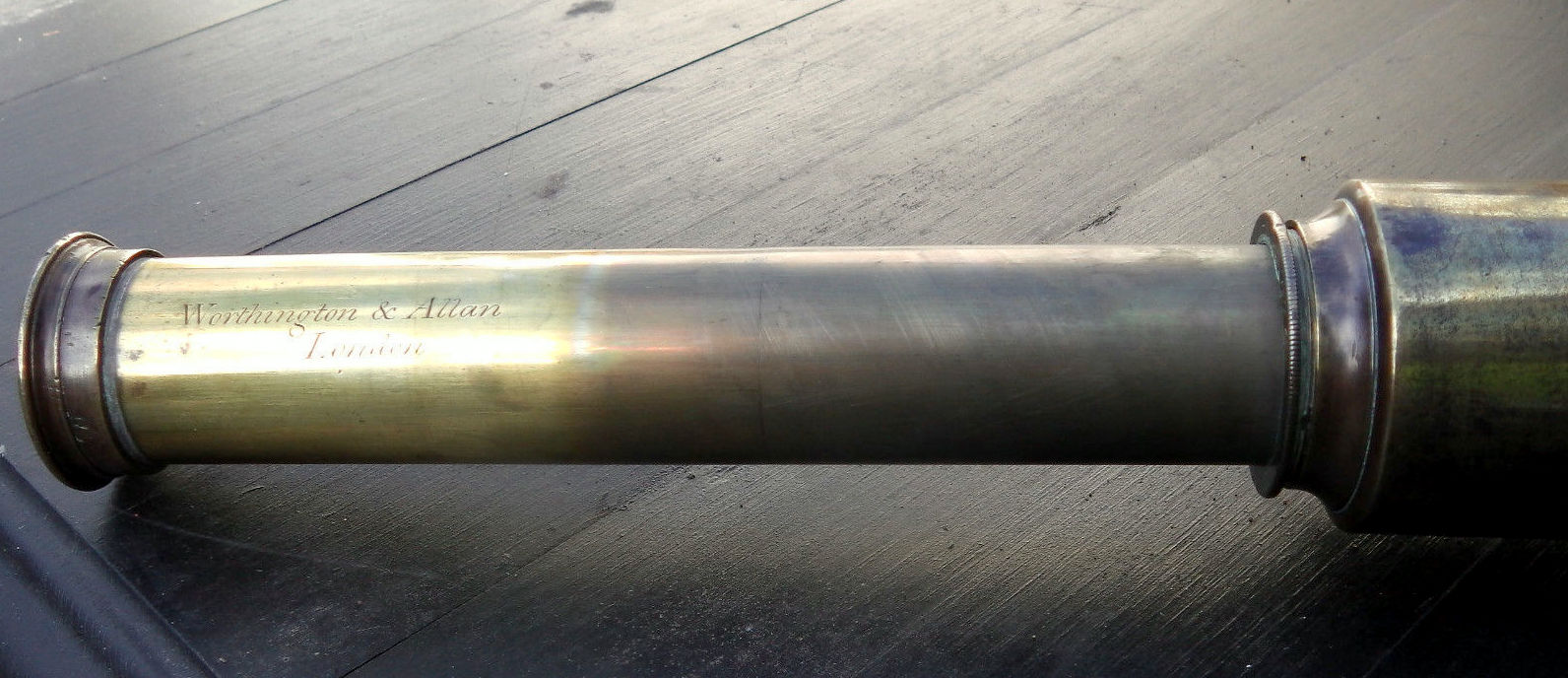Possibly designed to compete for the “Sporting Gentleman” market, like the Berge/Ramsden silver plated scope described earlier (July 30 2016), this is another telescope dating from 1800, but made by ‘Gilbert & Co’. The telescope itself does not give much more useful info, in the engraving, which says
” KINGS PATENT
Gilbert, & Co
LONDON “

The first thing to notice is that the engraving is on “the right hand side” of the telescope, ie the writing starts with the first letter of each line nearest to the eyepiece. This was the effective standard format from say 1760 to 1790: subsequently it seems this ‘unwritten standard’ gradually changed. From the early 1800s most of the engraving was placed on the opposite side, ie with the last letter of each line ending nearest to the eyepiece. So straight away it can be suggested that this telescope is maybe C18th.
It is likely that ‘Gilbert & Co’ was the name used by William Gilbert (1), at around 1800, when he had four of his sons working in the business with him: these were William (2), from 1795, Henry Robert from 1798, Thomas from 1801, and Charles from 1803. They worked from the Navigation Warehouse, at 148 Leadenhall Street, London, with William and Thomas subsequently setting up their own businesses as instrument makers from around 1809/1813, and later working together as partners.
There were other complex partnerships, where William Gilbert (1) worked with Gabriel Wright from 1792-1794, and again from 1802-1805, and then there were triple partnerships, in Gregory, Gilbert & Wright from 1790-93, and then Gilbert, Wright and Hooke, from 1794-1801 – all of these were in 148 Leadenhall Street. Possibly different names were used on different styles of instrument, which therefore drew on different expertise within the partners – or maybe the group of trades-people working together from this warehouse site. William Gilbert’s father John had also traded as an instrument maker and optician, working from around 1745: William was an apprentice to this John Gilbert (2), alongside Peter Dollond and Thomas Ripley, both to become famous. John himself was the son of a mathematical instrument maker, John Gilbert (1), who had worked from Tower Hill earlier, 1716 to 1749.

I have not found what the Patent quoted in fact refers to: but the pedigree shows William Gilbert was a major player in optical instruments at the end of the 1700s and early 1800s, and this telescope is arguably better than any similar Dollond.
Construction
 The whole telescope says “Quality”, starting with the silver plating and decoration around the eyepiece and objective lens. Pick it up and it feels right, but the big surprise is looking through it – the magnification is about twice what you might have been expecting. The lenses in the internal cartridges look good, and must be very carefully sized. One of the draws, the third, obviously what not quite snug enough, so the slider is padded with very thin felt. The sliders themselves have the threads about an inch down in the draw, with a shoulder at the top end, to make a two point mounting for each joint, keeping them tight in line.
The whole telescope says “Quality”, starting with the silver plating and decoration around the eyepiece and objective lens. Pick it up and it feels right, but the big surprise is looking through it – the magnification is about twice what you might have been expecting. The lenses in the internal cartridges look good, and must be very carefully sized. One of the draws, the third, obviously what not quite snug enough, so the slider is padded with very thin felt. The sliders themselves have the threads about an inch down in the draw, with a shoulder at the top end, to make a two point mounting for each joint, keeping them tight in line.
 Sizing is the sort of standard for this style of three draw scope, 29.5” fully open and 9.5” closed, OD is 2”. The mahogany barrel is still polished well, so that has not needed any rework: there is one longitudinal crack. The only quirk in the design would seem to be the extra ring which acts as a 5mm spacer near the objective – this might just be a spacer to enable a focus to be made even on very close objects (20 feet), where the extension required is close to the fully expanded length of the scope.
Sizing is the sort of standard for this style of three draw scope, 29.5” fully open and 9.5” closed, OD is 2”. The mahogany barrel is still polished well, so that has not needed any rework: there is one longitudinal crack. The only quirk in the design would seem to be the extra ring which acts as a 5mm spacer near the objective – this might just be a spacer to enable a focus to be made even on very close objects (20 feet), where the extension required is close to the fully expanded length of the scope.
Origin
We have no info about any owners. It was bought on Ebay, in September 2006. What surprised me was that it came from a farmhouse in Gulval, just east of Penzance, very close to where my daughter lives! I wonder what stately home it came from!
Accession number is #118. What value would you put on it? The retail value is certainly well over £500.
Comments:
2018: I love this telescope, so it isn’t yet for sale: but there is a similar one for sale on Ebay UK for around £625, by Gilbert & Wright, so maybe even a little earlier. See the dealer “silkandsawdust1” or Ebay item #273599051869…..
2023: This scope is now for sale, probably on Ebay for a couple of months, at a price of £200 or near offer….
Footnote: Navigation Warehouse
The building at 148 Leadenhall Street is now a suite of 92 serviced offices: it is accessed by the left hand door in the picture below.

A reference to the Navigation Warehouse at 148 records that John William Norie (1772–1843), a writer on navigation, was a Partner with Charles Wilson in publishing naval books and charts and also a dealer in nautical instruments at the “Navigation Warehouse” in Leadenhall Street at the end of the C18.
As the 2016 estate agent blurb says, the offices are “Set in the crossroads of the insurance and financial districts of London, directly opposite Leadenhall Market, and just around the corner from the Lloyd’s building and the Gherkin”.
Next door is a very sumptuous, even exotic bar (the Steam and Rye), with private dining rooms: one of these is the clock room (see below), which maybe harks back to the history of the area.










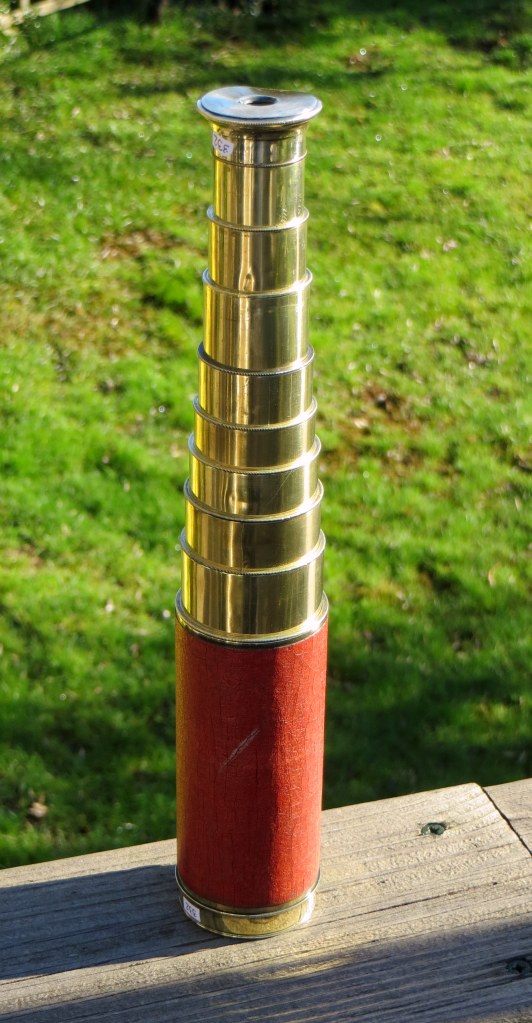
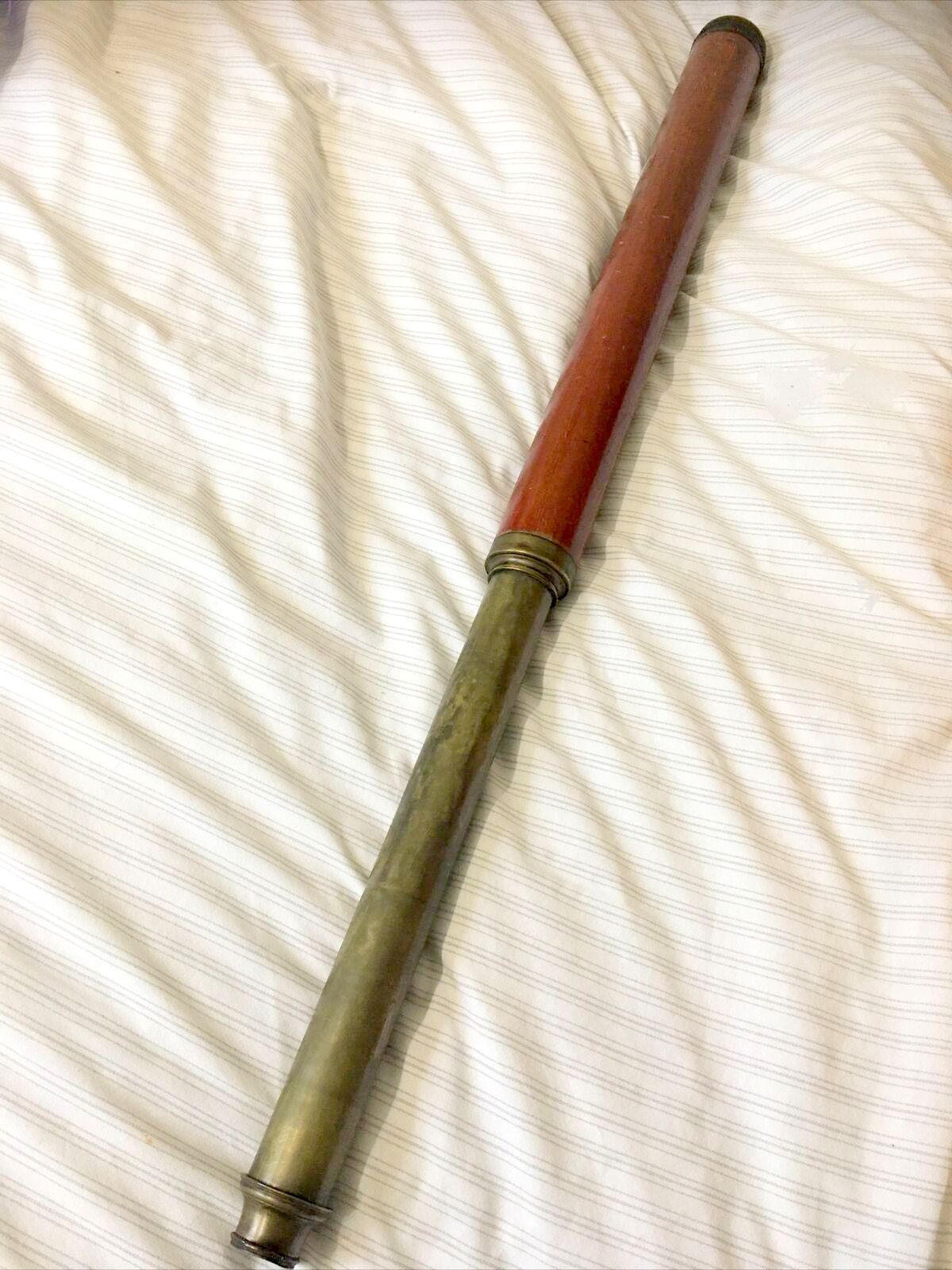


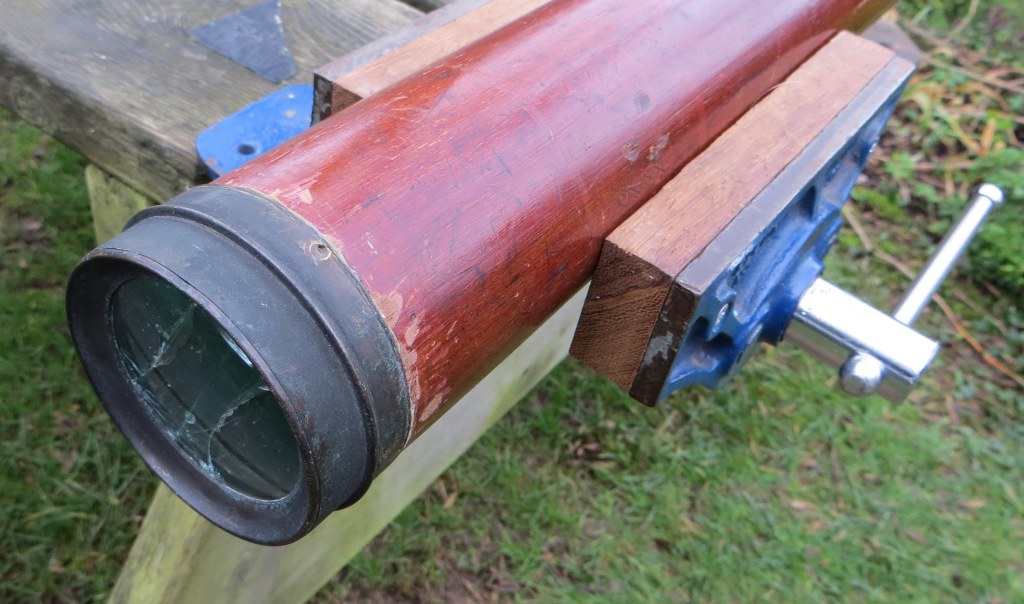

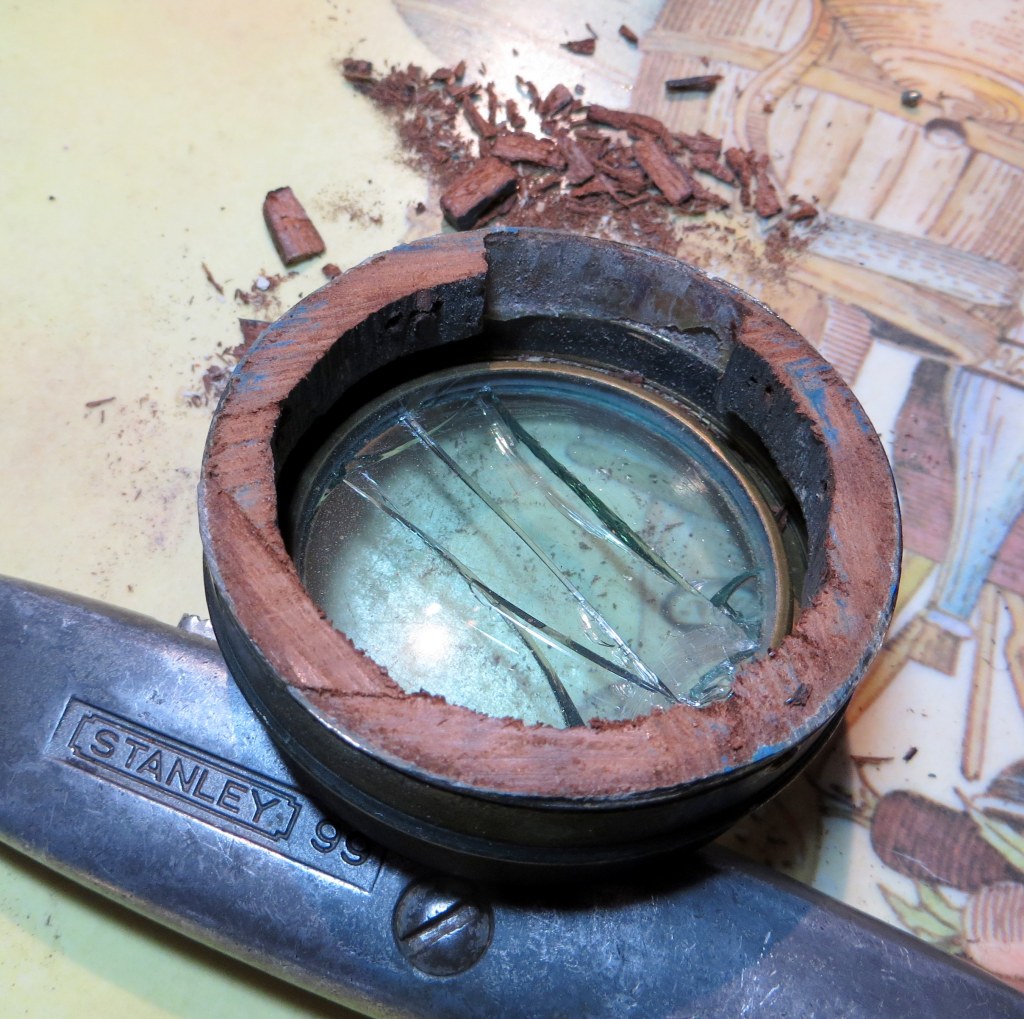

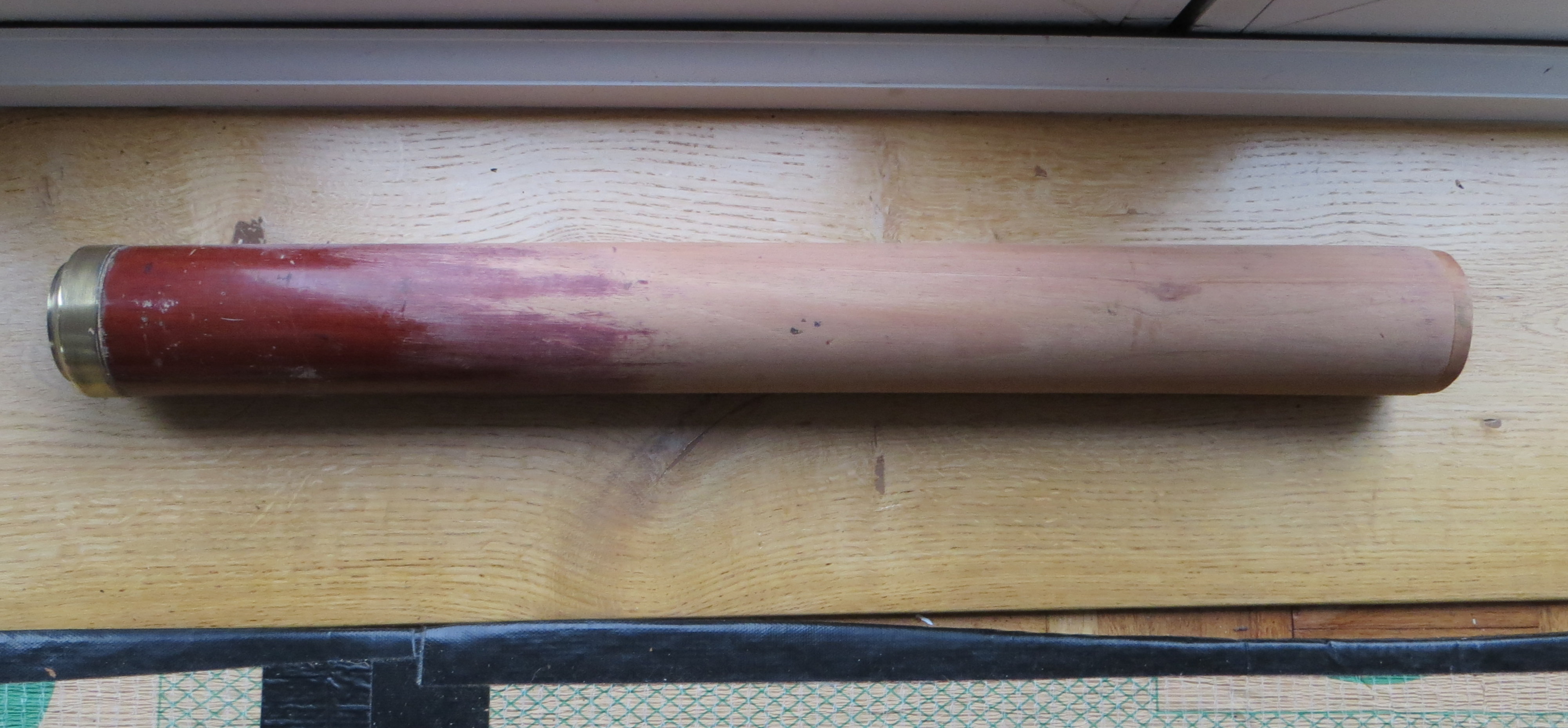

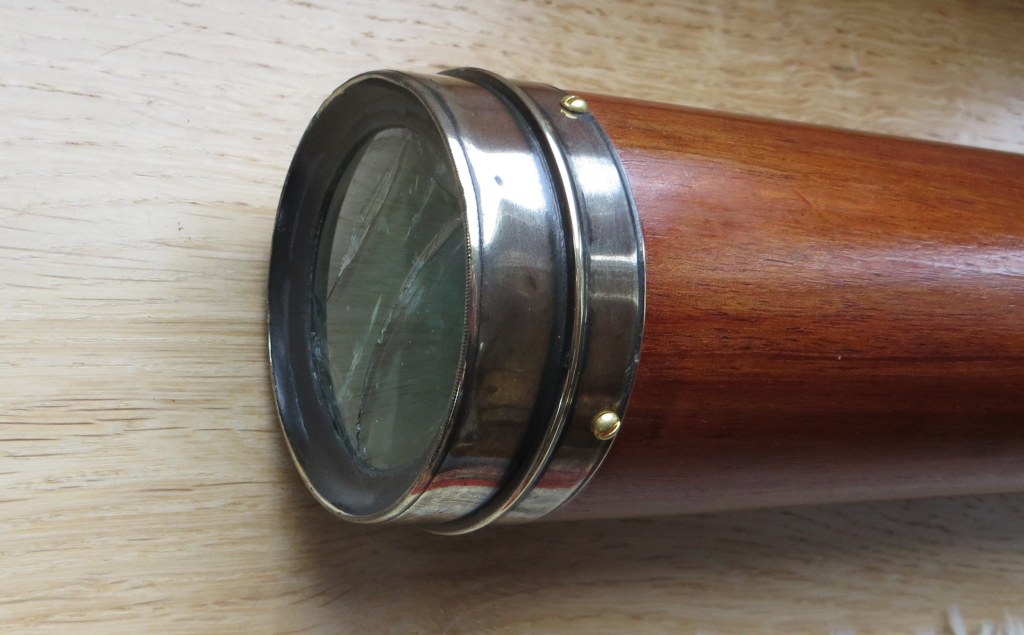
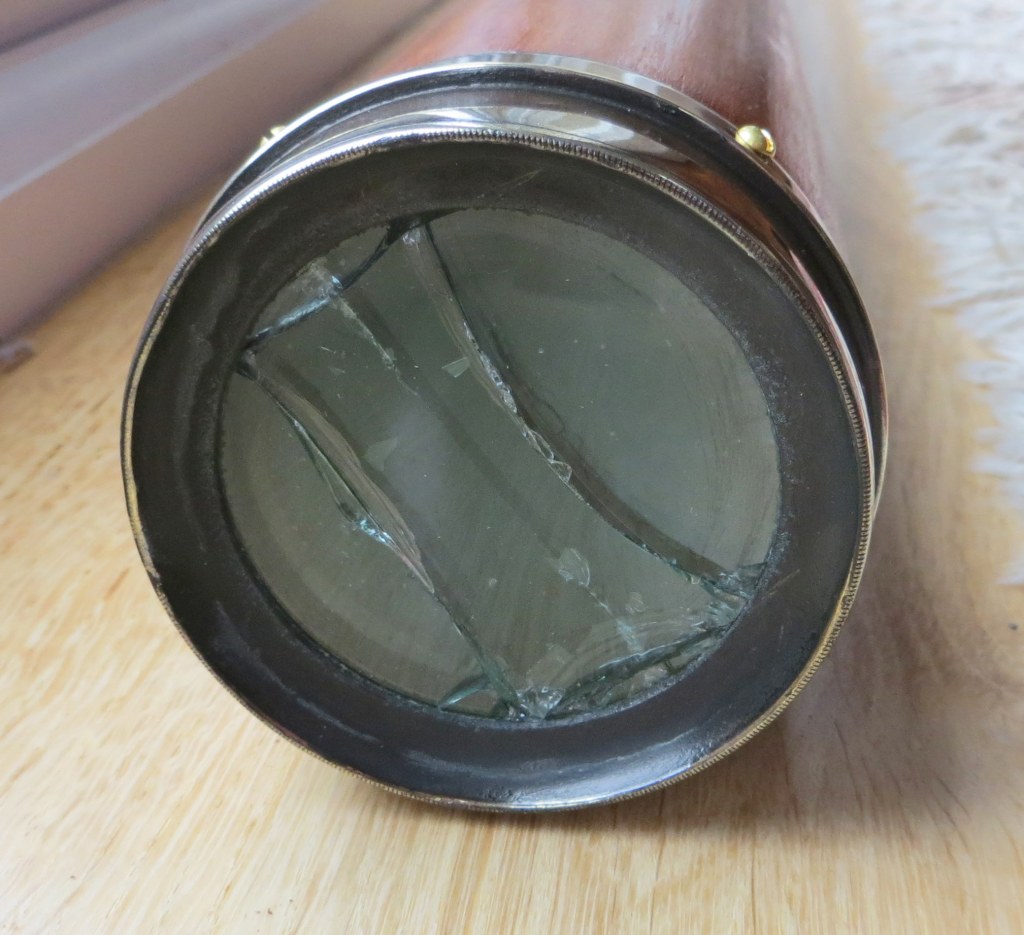


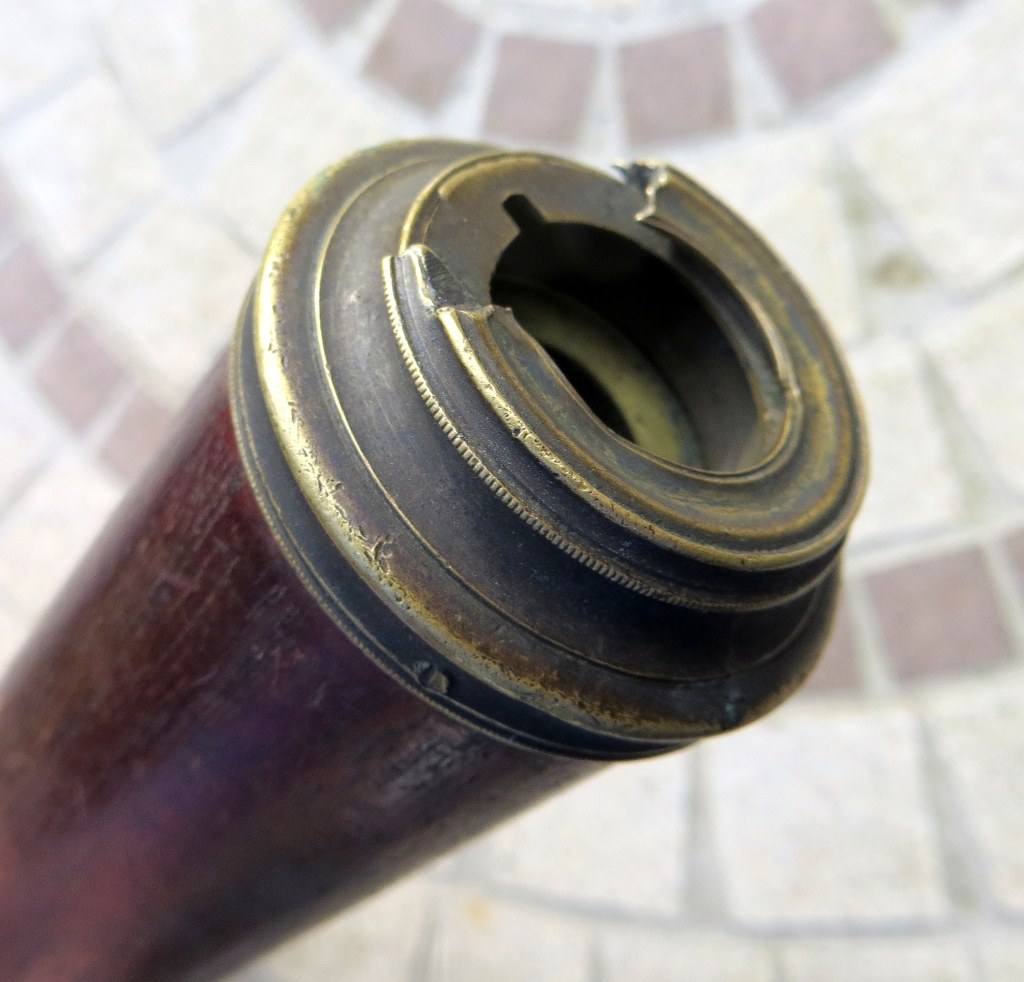
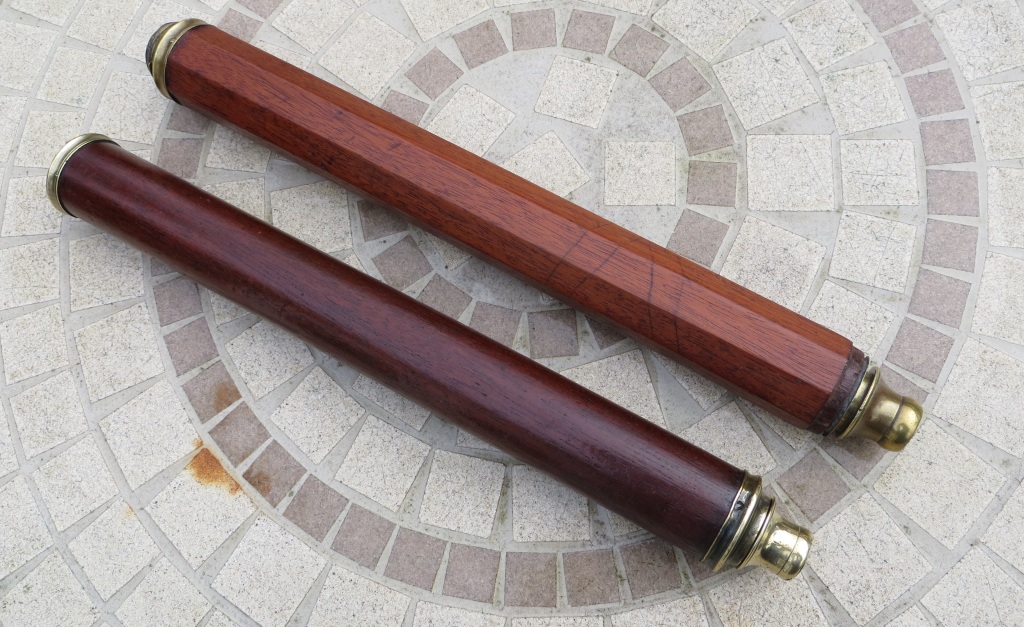



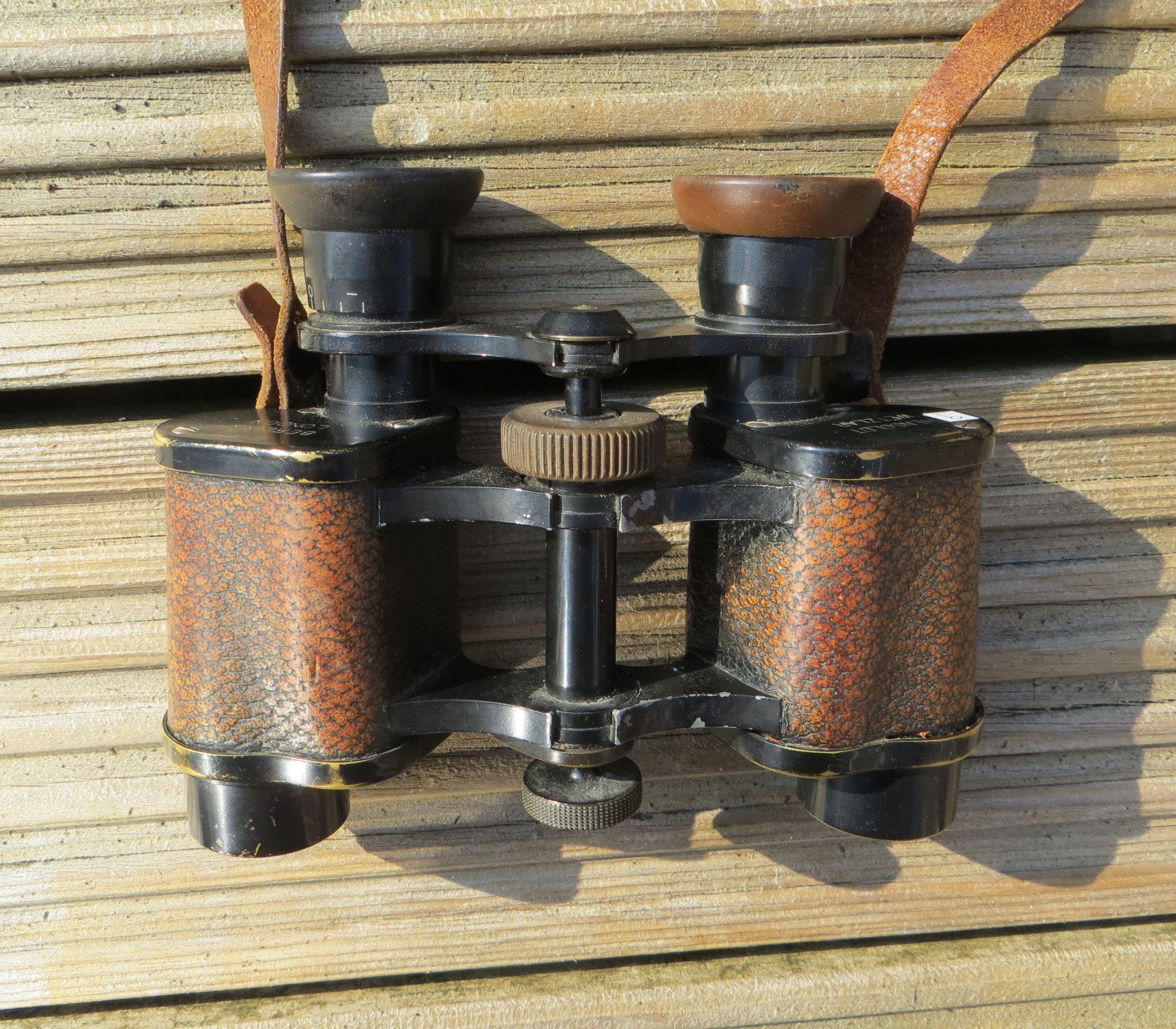



 An enquiry to Cambridgeshire CC Libraries found that, despite Buntingford being in Hertfordshire, they were able to tell me that several sons of Robert, Baron Dimsdale, attended Cambridge Uni: one, Charles Robert Southall Dimsdale became Baron in 1898, but died in 1928. He was actually the last to live at Meesden Manor – he was succeeded by his son Edward Charles, and then his son, Thomas Edward Dimsdale. A letter to Meesden Manor in 1995 gained a response from Wilfrid Dimsdale, son of Thomas Edward.
An enquiry to Cambridgeshire CC Libraries found that, despite Buntingford being in Hertfordshire, they were able to tell me that several sons of Robert, Baron Dimsdale, attended Cambridge Uni: one, Charles Robert Southall Dimsdale became Baron in 1898, but died in 1928. He was actually the last to live at Meesden Manor – he was succeeded by his son Edward Charles, and then his son, Thomas Edward Dimsdale. A letter to Meesden Manor in 1995 gained a response from Wilfrid Dimsdale, son of Thomas Edward. Meesden Manor was not quite so fortunate. It was acquired by the family in 1833. In the 1900s Thomas Edward was a regular Army officer, serving in India prior to WW2. During the war the area around the house was requisitioned for use as a camp for delinquent allied soldiers, mainly Americans. The house was not used for such, but in 1944 a V1 Flying bomb, aimed at London Bridge, missed, and hit the house. It was finally demolished after the war.
Meesden Manor was not quite so fortunate. It was acquired by the family in 1833. In the 1900s Thomas Edward was a regular Army officer, serving in India prior to WW2. During the war the area around the house was requisitioned for use as a camp for delinquent allied soldiers, mainly Americans. The house was not used for such, but in 1944 a V1 Flying bomb, aimed at London Bridge, missed, and hit the house. It was finally demolished after the war.


